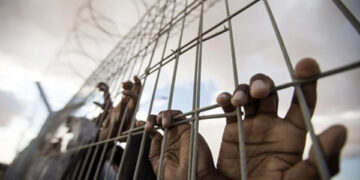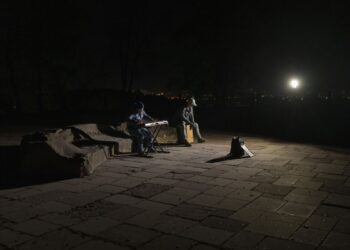Agencies-Gaza post
Trans history for men, women
Since the dawn of time, transgender persons have existed in societies all over the world, including non-binary and third gender people. Only in the 1950s and 1960s did the contemporary definitions of “transgender,” “gender,” “gender identity,” and “gender role” appear. As a result, there are different perspectives on how to classify historical records of gender-variant individuals and identities.
Priests referred to as gala who may have been transgender are mentioned in Sumerian and Akkadian scriptures that date back 4,500 years. From 9000 to 3700 years ago, there are likely representations in artwork from the Mediterranean region. Some researchers contend that the Galli priests who served in ancient Greece, Phrygia, and Rome were transgender women.
Elagabalus, a Roman emperor who died in 222 AD, liked to be addressed as a woman rather than a lord, underwent sex reassignment surgery, and is now regarded as a transgender person. Since the dawn of time, hijras on the Indian subcontinent and kathoeys in Thailand have established trans-feminine third gender social and spiritual societies.
Hijras are now regarded as the third gender by the law and number at least 500,000 in India and a further 500,000 in Bangladesh. Many trans individuals are also welcomed in Thailand. Today’s khanith in Arabia, like older mukhannathun, perform a third gender position that has been documented from the year 600 AD. Many African communities still maintain parts of the old roles for trans women and trans men in the present.
There are social and ceremonial roles for third gender individuals, or those whose gender expression transforms, in the Americas before European colonization, as well as in several contemporary North American Indigenous societies, such as the Navajo nádleehi and the Zuni lhamana.
Accounts from all around Europe during the Middle Ages describe trans males. It has been suggested that Kalonymus ben Kalonymus’s lament over being born a man rather than a woman is the earliest known instance of gender dysphoria. Transgender people have been identified as Eleanor Rykener, a male-bodied Briton who was detained in 1394 while living and doing sex acts while clothed as a woman.
Since the 1400s, males with female assignments have made the shift to living as men, known as vowed virgins, in the Balkans. Transgender people have been mentioned in Japan dating back to the Edo era. The Bugis of Sulawesi accept five genders, and there are millions of transgender and third-gender were living in Indonesia. The Cook Island Maori, Samoans, and Tongans all had trans-/third-gender roles such as the akava’ine, fa’afafine, and fakaleiti.
Thomas(ine) Hall, a colonial American, accepted the attire and social roles of both men and women in the 1600s, while the gender-neutral Public Universal Friend rejected both birth names and gendered pronouns in 1776. A few persons transitioned during the 1800s, including trans women like Frances Thompson and trans men like Albert Cashier, who started new lives as men and served in the military.
The Cercle Hermaphroditos was founded in 1895 by trans autobiographer Jennie June and others. In the 1900s, musician Billy Tipton lived as a man, while Lucy Hicks Anderson received acceptance from her family and the community for who she was.
Early female-to-male reassignment procedures were first performed on Karl M. Baer in 1906 and Alan L. Hart in 1917. Early male-to-female procedures were first performed on Dora Richter and Lili Elbe in 1930 and 1931, respectively, involving an ovary and uterine transplant for Elbe. Magnus Hirschfeld, whose groundbreaking work at the Institut für Sexualwissenschaft for trans medicine and rights was destroyed by the Nazis in 1933, assisted Baer, Richter, and Elbe.
The transition of American trans woman Christine Jorgensen in 1952 helped sex reassignment surgery gain widespread attention. Trans and gay people’s resistance to the police in the 1959 Cooper Donuts Riot, the 1966 Compton’s Cafeteria Riot, and the multi-day Stonewall Riots of 1969 increased the visibility of the grassroots movement for trans rights.
Lou Sullivan founded FTM International and pioneered visibility for gay trans guys in the 1970s. At the same time, some feminists rejected accepting trans women, leading to the development of extreme trans-exclusionism.
In the 1990s and 2000s, the Transgender Day of Remembrance was established, trans marches increased in frequency, trans persons were elected to public posts, and in certain nations, legislative and judicial acts started to recognize the rights of trans people (especially in the West, India, and southern Africa). In the meantime, transphobia causes several nations to restrict the rights of trans persons, particularly in the remainder of Africa, Central Asia, and Arabia.






















